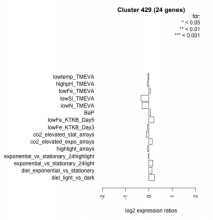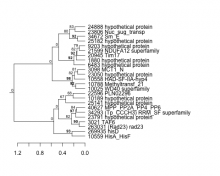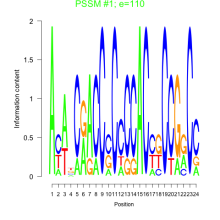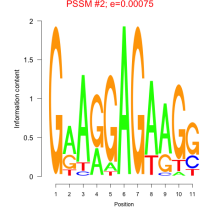10558 HAD-SF-IIA-hyp4Thalassiosira pseudonana
| Chromosome | Product | Transcript Start | End | Strand | Short Name | |
|---|---|---|---|---|---|---|
| 10558 | chr_17 | HAD-SF-IIA-hyp4 | 63718 | 65076 | - | HAD-SF-IIA-hyp4 |
| NCBI ID | Ensembl Genomes exon ID |
|---|---|
| 7450335 | Thaps10558.2, Thaps10558.1 |
| Expression Profile | Conditional Changes | Cluster Dendrogram | Discovered Potential cis-Regulatory Motifs |
|---|---|---|---|
Thaps_hclust_0429 |
 |
 |
   |
| Normalized Mean Residue | Discovered Potential cis-Regulatory Motifs | |
|---|---|---|
|
Thaps_bicluster_0089 |
0.36 |
 110  0.00075 |
| KEGG description | KEGG Pathway |
|---|---|
| Not available | Not available |

Add comment